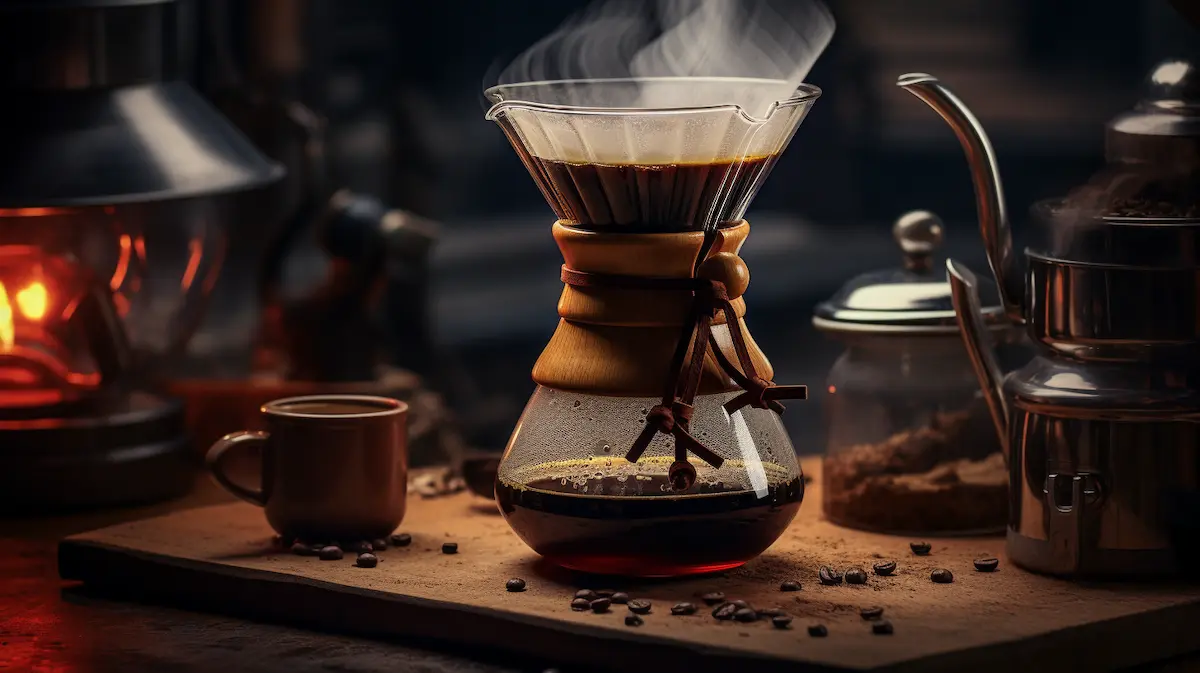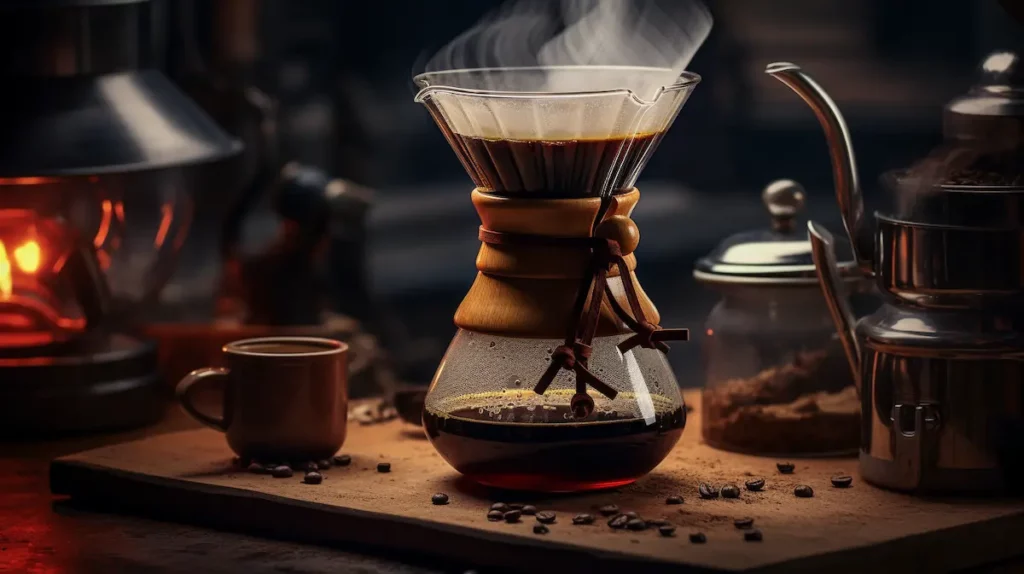For the uninitiated, filter coffee might seem like just another way to make your beloved morning brew. But delve a bit deeper and you’ll find this method, steeped in tradition and fine-tuned by modern techniques, offers a distinct set of flavors and characteristics that set it apart.
Dating back to the 9th Century in Ethiopia, and popularized in the 20th century thanks to German inventor Melitta Bentz, filter coffee provides a clear, nuanced cup that sits front and center in many coffee lovers’ routines.
In this article, we navigate the multifaceted world of filter coffee – exploring the different ways to brew it, the impact of different roast levels, and showcasing how factors like grind size, brewing temperature and more can shape your perfect cup.
What Exactly Is Filter Coffee?
Filter coffee involves pouring hot water over coffee grounds enclosed in a filter. This allows the water to seep through, extracting the flavors, and then trickling into a cup, jug or carafe below. The result? A typically clearer and lighter-bodied brew compared to its counterparts like espresso, but one that’s rich in flavor.
Several types of filters can be used to brew filter coffee, each influencing the taste and texture of the brew in subtly different ways. The most common choices are paper filters, metal filters, and cloth filters.
This makes the origin-specific flavors and characteristics of the coffee beans more pronounced in the cup. It’s a brewing method that really lets the complexity of coffee shine through.
Paper filters tend to deliver a clean cup with bright flavors as they remove most of the oils and coffee particles. Metal filters, on the other hand, allow more oils and fine particles to pass through, resulting in a fuller-bodied coffee. Cloth filters strike a middle ground, taking out some oils and particles, yet allowing others to pass through, producing a flavorful coffee that’s rich in body.
The brewing process of filter coffee is both an art and a science. It involves the meticulous control of variables: the right amount of coffee, the perfect grind size, correct water temperature, and precise pouring techniques. The goal is a balanced extraction, wherein the water can dissolve and transport the desired flavors from the ground coffee. Too fast, and the brew is under-extracted, weak and sour; too slow, and it’s over-extracted, bitter and unpleasant.
Brewing Methods for Filter Coffee
Filter coffee is versatile, and a variety of brewing methods can be used to make filter coffee. Two broad categories exist: manual methods and automatic methods.
Manual methods, as their name implies, require personal involvement in the brewing process. Each has its unique nuances and techniques:
- Aeropress: A relatively recent addition to the coffee world, the Aeropress clear brews by forcing water through coffee grounds using pressure applied manually.
- V60 pour-over: This method utilizes a cone-shaped dripper with a paper filter for a clean cup. The key to a great V60 pour-over lies in mastering the art of pouring and understanding the relationship between grind size and extraction.
- Chemex: A timeless design, the Chemex combines a pour-over filter cone and a beautiful glass decanter. It uses thicker proprietary filters, leading to a clear coffee with crisp acidity.
- French Press: Here, coarsely ground coffee is steeped in water before being separated by plunging a metal filter. This brews a full-bodied cup as the oils aren’t removed by a paper filter.
Automatic methods, or batch brewing, offer convenience with consistency. Filter coffee machines also known as drip coffee makers manage the brewing variables, doing the legwork while still delivering a delicious cup. They are usually the coffee maker of choice for households and offices.
Filter Coffee vs Espresso
When it comes to filter coffee vs espresso, the brewing process is the primary difference. Filter coffee involves gradual extraction as water drips slowly through coffee grounds, while espresso’s quick extraction forces near-boiling water under high pressure through finely ground beans.
Flavor-wise, filter coffee offers a clean, full bodied cup. Espresso has bolder, more intense flavors and is commonly used in milk-based drinks like lattes and cortados (or cortaditos).
As for the caffeine in filter coffee vs espresso, though espresso is more concentrated, a standard serving of filter coffee contains more total caffeine due to its larger volume.
The Role of Roasts in Filter Coffee
Roasts play a pivotal part in determining the flavor profile of filter coffee.
- Light Roast: Lightly roasted beans, characterized by a light brown color, retain most of their original coffee characteristics. These roasts often bring out bright, fruity or floral flavors, ideal for highlighting the unique qualities of the coffee origin.
- Medium Roast: Medium roasts strike a balance, bringing out a more balanced flavor, aroma, and acidity. More of the inherent flavors of the bean are developed during roasting, allowing a harmonious blend of taste characteristics to surface.
- Dark Roast: Darkly roasted coffee is bold, with pronounced bitterness and lower acidity. The roasting process for these beans tends to mute some of the original flavors but generates new ones, including a smoky or chocolatey flavor.
Factors Affecting the Flavor of Filter Coffee
Several factors can impact the flavor of your filter coffee:
- Grind Size: A crucial player in flavor extraction, the grind size affects the surface area exposed to water. Fine grinds offer more surface area but require a shorter brewing time compared to coarse grinds.
- Brewing Temperature: Water temperature affects extraction efficiency. Too hot, and it could over-extract, causing bitterness; too cool, and it may under-extract, leading to a weaker, sour brew.
- Brewing Time: Depending on the method, a longer brewing time can lead to over-extraction, while less time may result in an under-extracted, less flavorful cup.
- Water Quality: Since coffee is 98% water, the quality can greatly affect the taste. Soft, clean and freshly boiled water is preferred for optimal taste.
Conclusion
At the heart of filter coffee lies its distinct taste – clean, nuanced, and bold, ready to be customized by brewing methods, roast level, and even the choice of filters. The sheer variety and capability for customization highlight its unique place in the ever-expanding universe of coffee.
Happy brewing!

Coffee expert and industry insider, I’ve dedicated years to mastering the art and science of coffee making. From scrutinizing particle fineness to evaluating burr shapes, I delve into the minutiae that elevate coffee from good to exceptional. Whether it’s a complex pour-over or a robust espresso, my insights cater to those who don’t just drink coffee, but experience it.



